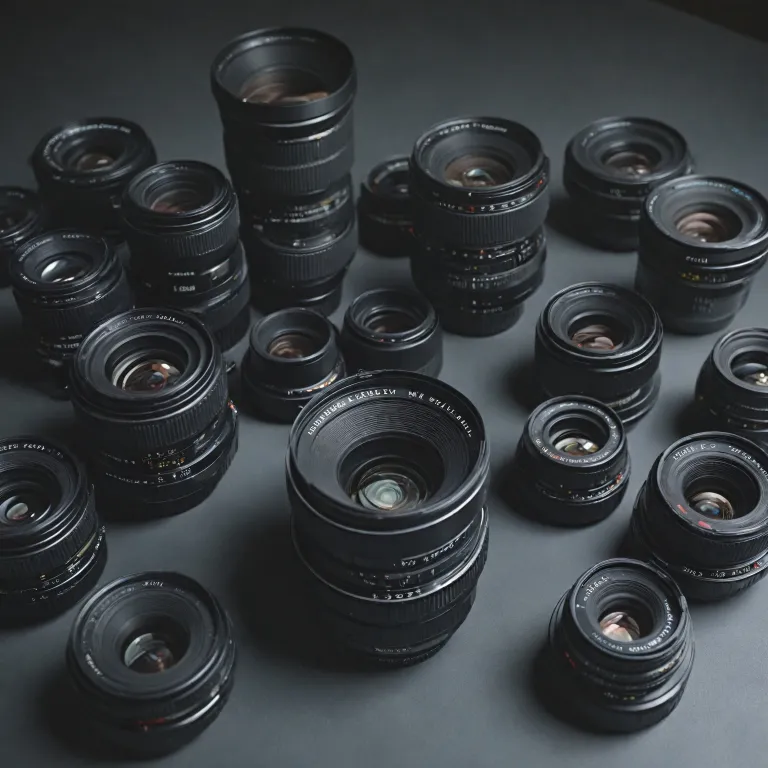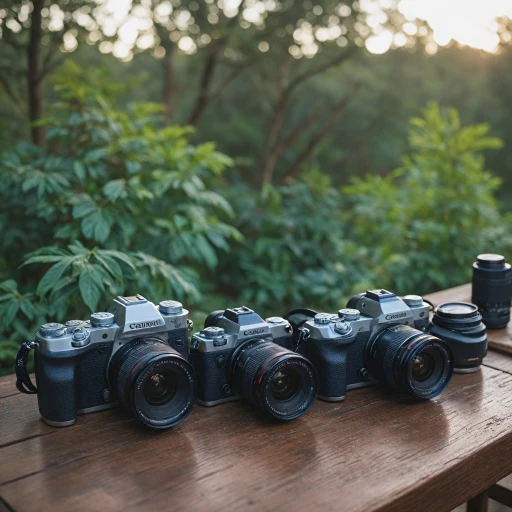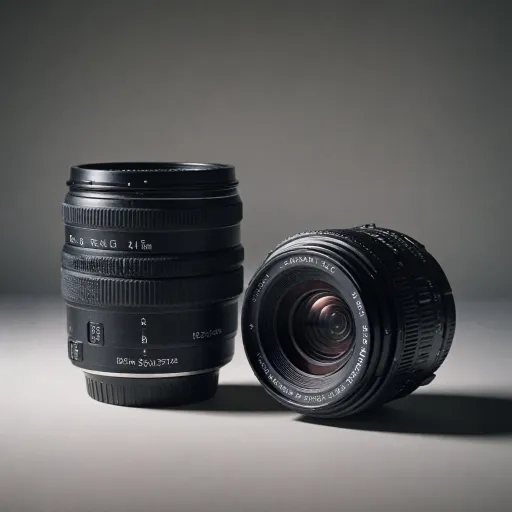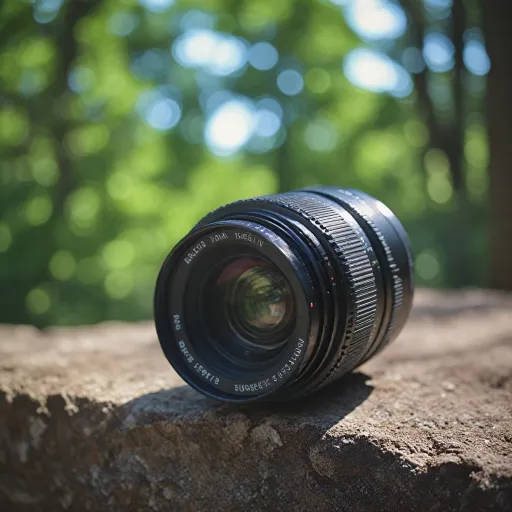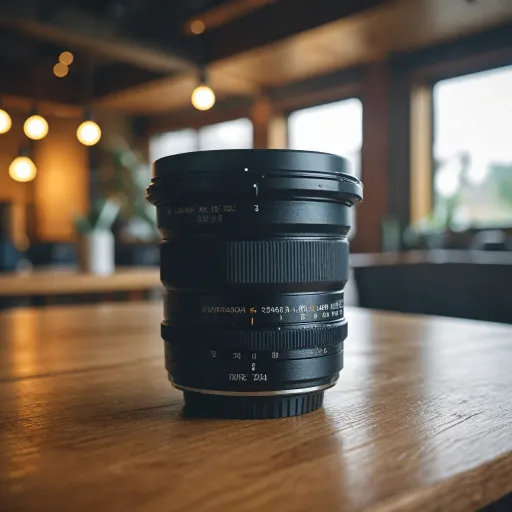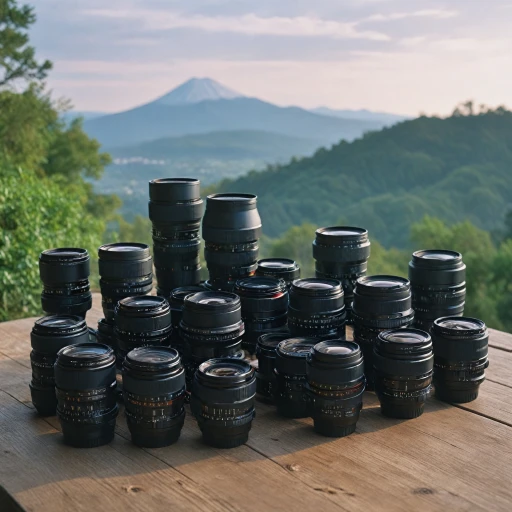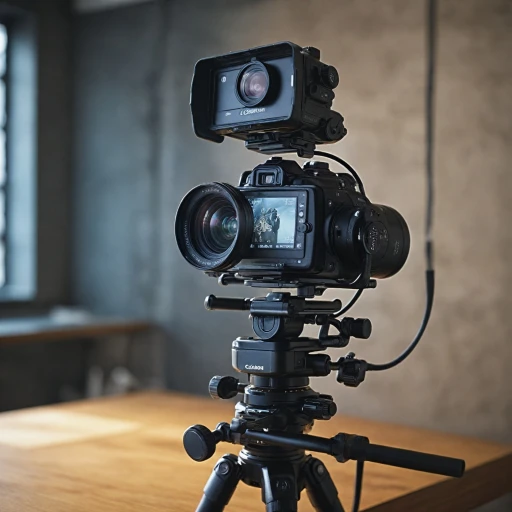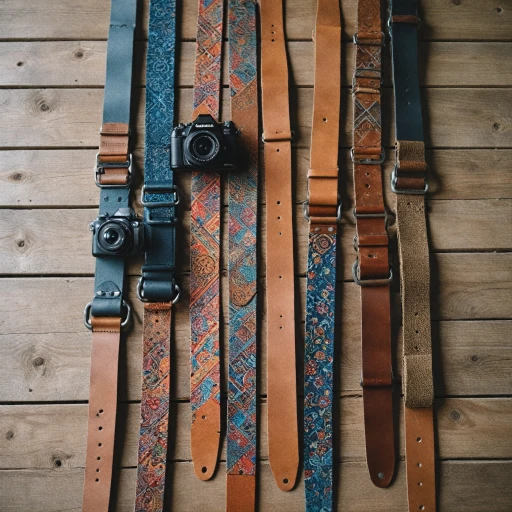
The Basics of the EOS EF Adapter
Introduction to the EOS EF Adapter
For many photographers invested in Canon's EOS series, understanding the mechanics and benefits of the EOS EF Adapter is crucial in taking their photography to the next level. This essential accessory bridges an important gap, extending the capabilities of your camera body by increasing the range of compatible lenses.
The EOS EF Adapter acts as a conduit between your camera's lens mount and the lens itself, effectively allowing various lens types to mount on your Canon body, regardless of whether you own a full frame or APS-C camera. This device ensures that you can utilize a wide array of lens accessories, giving you the flexibility to adapt to any shooting scenario without being confined to a specific lens mount.
Construction and Design
The adapter's design is made with precision in mind. It's a robust piece of equipment crafted from high-quality materials to ensure durability and seamless performance.
Its user-friendly interface makes it easy to attach and detach lenses, minimizing the risk of damaging your lens mount.
The integration of a control ring provides further functionality, allowing camera enthusiasts to fine-tune settings with ease, which can be particularly beneficial when shooting in varied environments.
Cost and Investment
When considering the best camera accessories for your arsenal, the price of the EOS EF Adapter is a consideration. Nonetheless, it represents a valuable investment for serious photographers aiming to maximize their lens kit without investing in a whole new set of lenses.
By enhancing the versatility of your camera, the adapter can be seen as a gateway to a broader photographic world, offering a wider spectrum of expressive potential through expanded lens compatibility.
Compatible Lens Types
Exploring Compatible Lens Options
When it comes to using the EOS EF Adapter, understanding which lenses are compatible is crucial for maximizing your camera's potential. The adapter serves as a bridge between different lens mounts, allowing photographers to use a variety of lenses with their Canon EOS camera bodies. This flexibility is particularly beneficial for those who own multiple lenses or are transitioning from another camera system.
The EOS EF Adapter is designed to be compatible with a wide range of lenses, including:
- EF Lenses: These are the standard lenses for Canon's full-frame cameras. They are fully compatible with the EOS EF Adapter, ensuring seamless integration and optimal performance.
- EF-S Lenses: While primarily designed for Canon's APS-C cameras, these lenses can also be used with the adapter, although they may not cover the full frame sensor completely.
- Third-Party Lenses: Many third-party manufacturers produce lenses with EF mounts, and these can often be used with the adapter. However, it's important to verify compatibility to ensure full functionality.
Using the EOS EF Adapter opens up a world of possibilities, allowing photographers to experiment with different focal lengths and lens types. Whether you're interested in capturing wide landscapes or detailed close-ups, the right lens can make all the difference. For those curious about unique perspectives, exploring the world through a fisheye lens can offer exciting creative opportunities. For more insights, check out this article on fisheye lenses.
In the next sections, we'll delve into the benefits of using the EOS EF Adapter and discuss some limitations and considerations to keep in mind. Understanding these aspects will help you make informed decisions when selecting lenses for your photography needs.
Benefits of Using the EOS EF Adapter
Enhanced Shooting Flexibility
Using the EOS EF Adapter offers a considerable boost in shooting flexibility for photographers using Canon cameras. By bridging the compatibility gap between various lenses and the eos system, this adapter allows users to mount EF and EF-S lenses onto their camera bodies, whether they are using an eos mark camera or a different model in the eos series.
Maintain Full Functionality
One of the standout benefits of this adapter is its ability to maintain full functionality with compatible lenses. The adapter supports full autofocus, image stabilization, and aperture control functionalities, ensuring that your camera’s performance is not hindered. It’s an ideal solution for those wanting to leverage older lens collections while utilizing the advanced capabilities of modern canon eos bodies.
Cost-Effective Solution
A Canon EOS EF Adapter is an economical option for photographers looking to maximize their investment. Instead of purchasing new lenses, adapting existing ones can be a cost-saving measure. Whether you're looking to mount a full frame lens or an eos aps lens, the price of these adapters is generally lower than buying an entirely new lens setup.
Simplifying Switching Between Lenses
The adapter simplifies the process of switching between different lens mounts, making it easier for photographers to adapt to different shooting conditions. This added convenience is particularly valuable for professionals who frequently switch between lenses with varying focal lengths and capabilities.
For photographers looking to extend their digital camera’s operational time, using lens adapters like the EOS EF Adapter can streamline workflows and save valuable shooting time.
Limitations and Considerations
Understanding the Challenges of Using the EOS EF Adapter
While the EOS EF Adapter opens up a world of possibilities for photographers, it's essential to be aware of its limitations and considerations. Understanding these factors will help you make informed decisions when integrating this accessory into your photography setup.
First and foremost, compatibility is a key concern. Although the adapter is designed to bridge the gap between different lens mounts, not all lenses are fully compatible with every camera body. It's crucial to verify that your specific lens and camera combination will work seamlessly with the adapter. This involves checking the compatibility of the lens mount and ensuring that the adapter is suitable for your Canon EOS system.
Another consideration is the potential impact on autofocus performance. While many lenses will maintain their autofocus capabilities when used with the adapter, some may experience slower focus speeds or reduced accuracy. This is particularly important for photographers who rely on fast and precise autofocus, such as those shooting sports or wildlife.
Price is another factor to consider. While the adapter itself may be reasonably priced, the cost of acquiring compatible lenses can add up. It's important to weigh the benefits of using the adapter against the potential investment in new lenses or accessories.
Additionally, the physical size and weight of the adapter can affect the overall balance and handling of your camera setup. This is especially true for those using smaller camera bodies, where the added bulk of the adapter and lens can make the system feel unwieldy.
Finally, consider the potential limitations in terms of image quality. While the adapter is designed to maintain the optical performance of your lenses, there may be slight variations in image sharpness or distortion, particularly when using lenses that are not originally designed for your camera's sensor size, such as full-frame lenses on an EOS APS-C body.
In summary, while the EOS EF Adapter offers significant advantages, it's essential to be mindful of these limitations and considerations. By doing so, you can ensure that you make the best use of this versatile tool in your photography endeavors.
Tips for Choosing the Right Lens
Key Considerations When Selecting Lenses for Your EOS System
When it comes to picking the best lens for your Canon EOS camera body using the EOS EF adapter, several factors come into play. These pointers will guide you in making an informed decision that's not just about the price, but about ensuring seamless compatibility and performance with your Canon system.- Lens Compatibility: Ensure that the lens you choose is fully compatible with the EOS series and supports the specific mount adapter you are using. Since the market offers a wide array of adapters, verify that your selected adapter is capable of maintaining full camera control, including features like focus and image stabilization.
- Lens Type and Purpose: Consider the purpose of your photography. For instance, prime lenses often deliver superior image quality, while zoom lenses offer versatility. If you're stepping into specialized photography, such as astrophotography or portraiture, research which lens types would best serve your needs.
- Focusing System: The focus system is a critical component. Seek a lens that supports quick and accurate autofocusing to complement your camera body. Some adapters come with extras like a control ring that can enhance your shooting experience by allowing for smooth adjustments.
- Full Frame vs APS-C: If you are using a full frame camera, ensure your lens can cover the full sensor to avoid vignetting. For APS-C cameras, you might have more flexibility. However, it's essential to know that using a lens designed for a full frame on an APS-C body can impact the effective focal length.
- Quality and Brand: Stick with brands renowned for quality. Canon lenses, for instance, are designed to be fully compatible with their camera bodies, ensuring optimal performance. Investigate user reviews and professional opinions to gauge the reliability and durability of the lens.
- Budget Considerations: While price is a vital factor, weigh it against quality and longevity. Sometimes investing in more expensive accessories can prove economical in the long run due to their durability and better performance.
